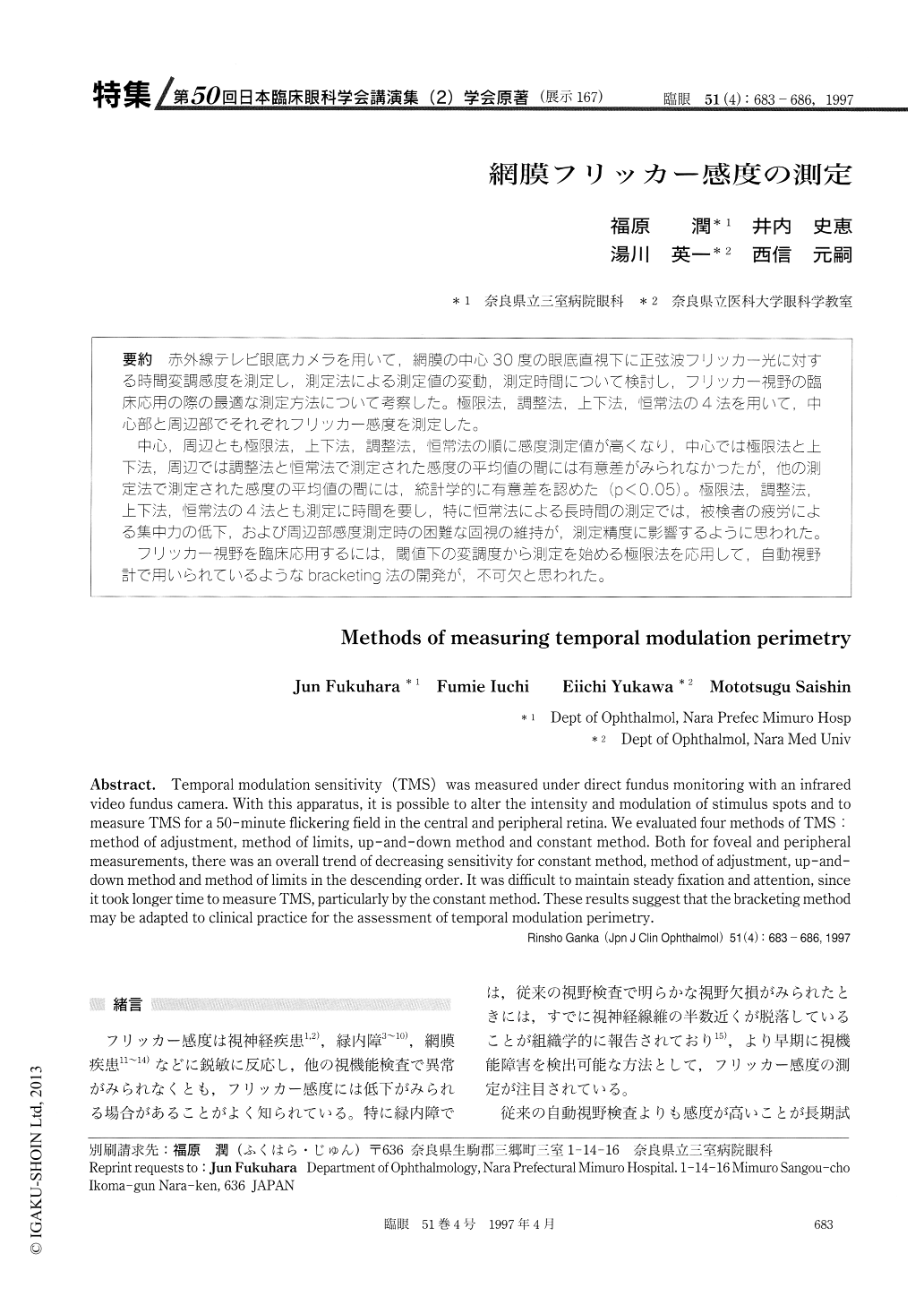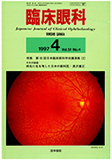Japanese
English
- 有料閲覧
- Abstract 文献概要
- 1ページ目 Look Inside
(展示167) 赤外線テレビ眼底カメラを用いて,網膜の中心30度の眼底直視下に正弦波フリッカー光に対する時間変調感度を測定し,測定法による測定値の変動,測定時間について検討し,フリッカー視野の臨床応用の際の最適な測定方法について考察した。極限法,調整法,上下法,恒常法の4法を用いて,中心部と周辺部でそれぞれフリッカー感度を測定した。
中心,周辺とも極限法,上下法,調整法,恒常法の順に感度測定値が高くなり,中心では極限法と上下法,周辺では調整法と恒常法で測定された感度の平均値の間には有意差がみられなかったが,他の測定法で測定された感度の平均値の間には,統計学的に有意差を認めた(p<0.05)。極限法,調整法,上下法,恒常法の4法とも測定に時間を要し,特に恒常法による長時間の測定では,被検者の疲労による集中力の低下,および周辺部感度測定時の困難な固視の維持が,測定精度に影響するように思われた。
フリッカー視野を臨床応用するには,閾値下の変調度から測定を始める極限法を応用して,自動視野計で用いられているようなbracketing法の開発が,不可欠と思われた。
Temporal modulation sensitivity (TMS) was measured under direct fundus monitoring with an infrared video fundus camera. With this apparatus, it is possible to alter the intensity and modulation of stimulus spots and to measure TMS for a 50-minute flickering field in the central and peripheral retina. We evaluated four methods of TMS : method of adjustment, method of limits, up-and-down method and constant method. Both for fovea] and peripheral measurements, there was an overall trend of decreasing sensitivity for constant method, method of adjustment, up-and-down method and method of limits in the descending order. It was difficult to maintain steady fixation and attention, since it took longer time to measure TMS, particularly by the constant method. These results suggest that the bracketing method may be adapted to clinical practice for the assessment of temporal modulation perimetry.

Copyright © 1997, Igaku-Shoin Ltd. All rights reserved.


